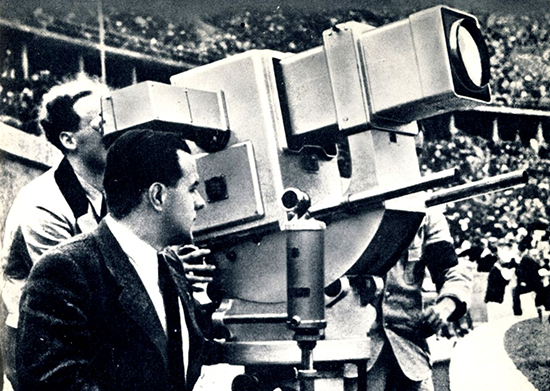From electrical engineer to pioneer of German color television: Walter Bruch soon set out on this path. After completing his apprenticeship in a shoe factory, in 1928 he began studying electrical engineering at the technical school “Technikum Mittweida” in Saxony at the age of 20. It was radio technology that he was most interested in. He enrolled as a guest student at the university in Berlin, where he met Manfred von Ardenne, the inventor of the television with a cathode-ray tube, and Dénes von Mihály, who had developed a mechanical television system. Bruch worked for both men as a research assistant, immersing himself more and more in the fascinating world of television. In 1935, he began working in the television department at Telefunken AG and was involved in the development of a television camera for broadcasting the 1936 Olympic Games in Berlin. For the Games, the first to be broadcast live, he also stood behind the camera – a device that was so huge it was nicknamed the “Olympic Canon”. During the Second World War, Walter Bruch worked in the service of the military in Peenemünde and developed a cable television system for observing rocket launches.
1967: birth of PAL color television in Germany
From 1950, back at Telefunken, he tinkered with the first post-war television sets as head of the development department in Hanover. American and French researchers were already busy in this field as well, with their NTSC system and the SECAM format. Bruch analyzed and experimented to improve the technology already known and, above all, to compensate for disturbing color tone errors. This is how he came up with the idea for the “Phase Alternation Line” (PAL) system, which he patented in 1962. His system was based on the idea that two successive lines have more similarities than differences because images are made up of frames. The phase of the color carrier of a color difference signal is reversed by 180 degrees from line to line. This automatically and almost completely corrects color tone errors on the receiver side.
The system developed by Walter Bruch quickly caught on in Europe and to some extent in Asia, Africa, and South America. At the 1967 IFA Berlin, Willy Brandt pushed a button which gave the starting signal for color television in Germany.
(Header image: Open Clipart – Vectors – pixabay.com, in the article: Olympic Canon 1936 by Telefunken-Bild, Berlin on Wikipedia licensed under CC BY-SA 3.0)




